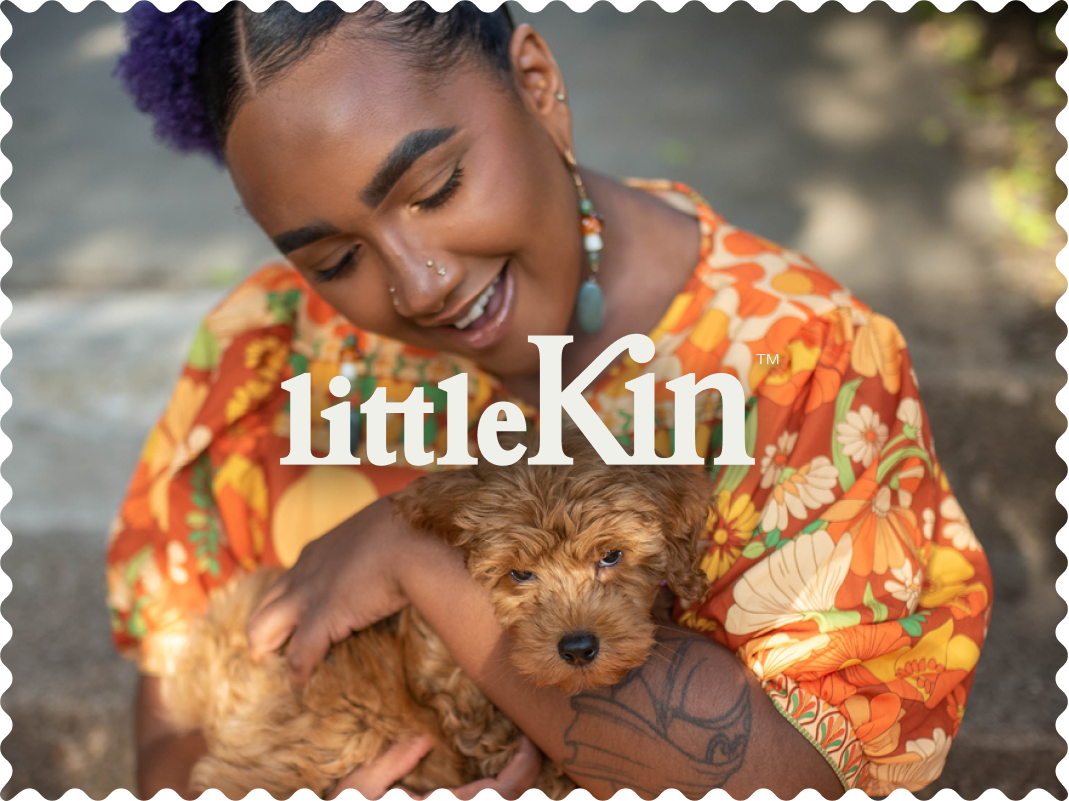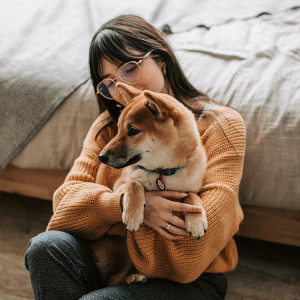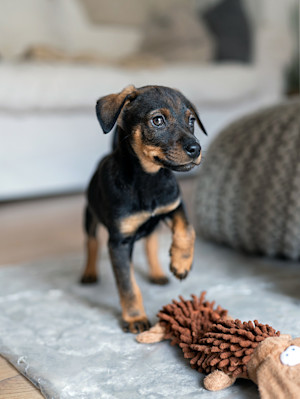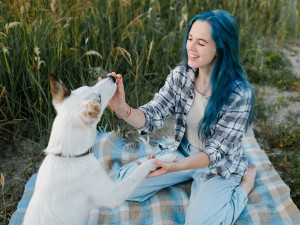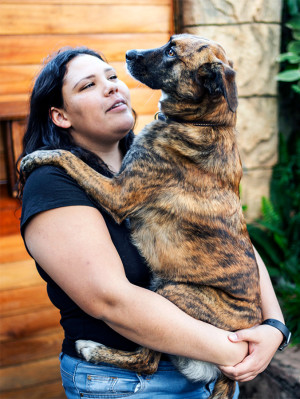How to Ease Your Puppy’s Separation Anxiety
It’s not easy for either of you—but this can help.
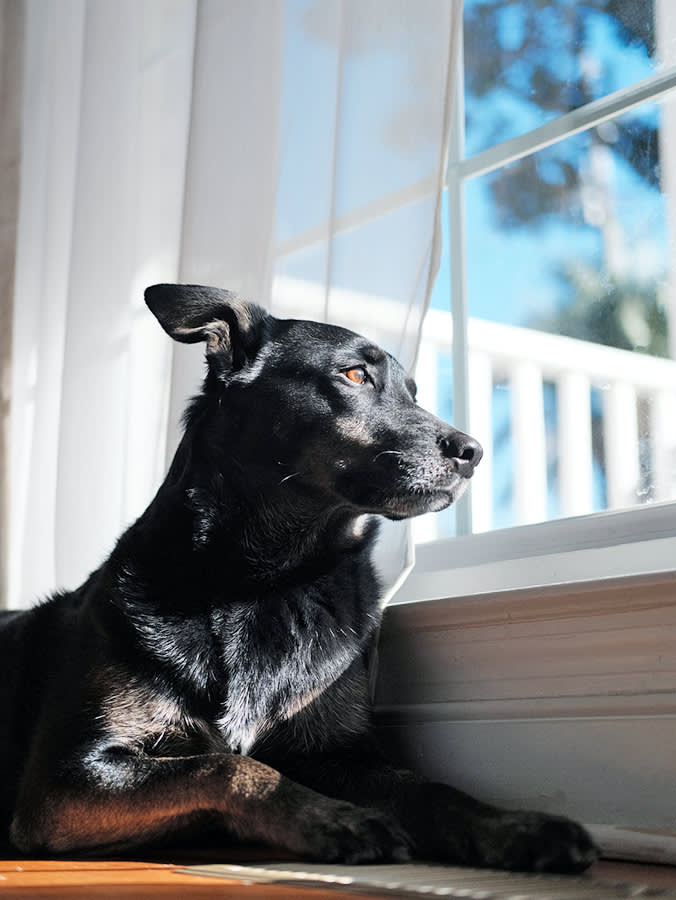
Share Article
In This Article:
What Is Puppy Separation Anxiety? Tips to Help Prevent Separation Anxiety Managing Your Puppy’s Separation Anxiety Tools to Help With Separation Anxiety When to Consult a Vet or Behavioral Specialist
There are few things as exciting as bringing a new puppy home. The anticipation makes your heart race, and those first hours are so much fun. But along with the excitement comes some challenges.
Each puppy has different challenges, but one of the most common is separation anxiety. It may sound normal and straightforward to deal with, but separation anxiety can lead to stress for both you and your new pup. Fortunately, the problem can be resolved with knowledge and patience. In this guide, we will examine what separation anxiety in puppies is, how to prevent or (if necessary) manage it, and when it’s time to seek professional help.
How much do you spend on your pet per year?

What is puppy separation anxiety?
Puppy separation anxiety is more than just a little whimper when you leave the house. It’s when your puppy becomes so distressed over you leaving that there are continuous whimpers or barking, destructive chewing, or even self-injury. You may think these actions are behavioral problems, but they are emotional responses from intense fear and insecurity. Your puppy is not misbehaving but is downright terrified.
Symptoms of separation anxiety in puppies
How can you tell if your pup has separation anxiety? Common symptoms include:
Whining, barking, or howling when left alone
Pacing or panting excessively
Destructive behavior, such as chewing furniture or scratching doors
Attempts to escape (digging near doors or windows)
Urination or defecation indoors, despite being house-trained
Clinginess when you’re home — following you from room to room
Drooling or trembling as you prepare to leave
It’s quite common for these actions to occur in puppies and even in grown dogs.
Causes of separation anxiety
There are many underlying causes of separation anxiety in puppies.
Early weaning or abrupt changes in environment: Puppies taken from the breeder or rescue shelter too early will have their bond broken from their litter prematurely and develop a stronger attachment to humans.
Lack of exposure to alone time: Puppies who are always with someone in their early weeks and never have time alone can become too dependent on humans.
Past trauma: Puppies from shelters or rescues may have been abandoned or even neglected or abused, making them more anxious.
Sudden changes in routine: Moving to a new home, changes in a caregiver’s schedule, or disruptions in their daily routine can all contribute.
A puppy may suffer from more than one of these situations, making separation even harder to bear.
Tips to help prevent separation anxiety in puppies
Prevention is always better than treatment. If you cultivate confidence and independence as early as possible, your puppy can avoid separation anxiety. Try the following tips.
Socialization and exposure
The more you introduce your puppy to other people and dogs, as well as different environments and experiences, the more confident they will be — and the less likely they will develop anxiety. Positive early-life experiences play a huge role in emotional development.
Expose them to being alone in a safe space for short intervals.
Encourage calm independence without constantly giving in to them when they demand attention.
Practice brief separations, even while you’re home, to build tolerance. Spend time in separate rooms.
Establishing a routine
Dogs, especially puppies, thrive on predictability. A daily routine for all their essentials, such as meals, potty breaks, playtime, and rest, helps create a sense of security. In particular, keep departure and return times consistent. Also, avoid big, dramatic goodbyes or, conversely, enthusiastic greetings. Remain calm when you’re coming and going.
Creating a safe environment
When your puppy is left alone, a cozy, secure space can help. A crate, playpen, or any designated puppy-proofed area will work. Add their favorite toys and comfy bedding. Crate training them, instead of getting upset at them, can help your pup feel secure and safe when you’re gone. An article of your clothing with your scent on it can also comfort your puppy.
Let your puppy know they can trust you
Building trust is the foundation of anxiety reduction. Be patient and responsive to your puppy’s needs. Never use punishment for separation-related behaviors. That only makes matters worse: It will increase fear and intensify their anxiety. Instead, offer praise and rewards when your puppy remains calm and relaxed. This will reinforce positive emotional states.
Tips for managing your puppy’s separation anxiety
It’s never too late. If your puppy is already showing signs of separation anxiety, don’t worry — you can still manage the problem.
Exercise and nutrition
Your pup must get plenty of physical and mental stimulation each day. A tired puppy is a relaxed puppy. There are tons of puzzle toys on the market. There are toys your puppy can play with alone and others you can play with together. Walks are always good physical and mental breaks. Don’t forget about diet. The importance of a well-balanced diet can’t be overstated. It helps keep the nervous system happy and regulates mood.
Behavior modification
Behavioral training is a powerful tool. This is something you can do during short breaks at home. It can help increase confidence and reduce dependency. Here’s what to do.
Train your puppy to settle and relax on a mat or bed when you’re home.
Use positive reinforcement to reward calm behavior, especially during practice separations.
Gradual desensitization
Desensitization is a process where repeated exposure to something, done gradually, leads to a decreased response. This can be an excellent method to use with your puppy. You slowly get your puppy used to being alone by starting with brief absences and gradually increasing the duration.
Leave them for just one to two minutes at first, then return before your puppy becomes distressed.
Practice daily, increasing the time away only when your puppy remains calm.
Pair departures with a high-value treat or chew toy to create a positive association.
Consistency is key. If your puppy panics, you may have moved too fast — scale back and proceed slowly.
Tools that can help with separation anxiety
Some commercially made products can help significantly with separation anxiety, alongside your training and patience.
Toys
Interactive toys and puzzle feeders provide mental stimulation and can redirect your puppy’s focus away from the fact that they’re alone.
Kong toys filled with frozen peanut butter or wet food can keep your puppy occupied for extended periods.
Rotate toys regularly to maintain interest and novelty. Your puppy will become bored if the same toys are always available without adding anything new.
Calming aids
Over-the-counter calming aids are available and can be used as part of a broader anxiety-reduction plan.
Dog-appeasing pheromone diffusers (DAP): These mimic the calming pheromones a mother dog emits.
Calming collars and sprays: Often infused with lavender or chamomile, these can promote relaxation.
Supplements: L-theanine, CBD (vet-approved), or melatonin-based treats may help ease anxiety.
Always consult your veterinarian before introducing any supplements or calming products.
When should you consult a vet or behavioral specialist?
If your puppy’s behavior isn’t improving or is worsening, it may be time to consult a professional.
Veterinarians can rule out medical issues and may prescribe anti-anxiety medications in extreme cases. But they may not be appropriate to consult if you need more behavioral modification.
Professional dog trainers or veterinary behaviorists can develop a personalized behavior modification plan.
Signs that warrant professional help include:
Destructive behavior that results in injury
Escalating vocalization or panic
Weight loss, diarrhea, or other stress-related health concerns
Inability to be left alone even for a few minutes
Early intervention leads to better outcomes and less stress for you and your puppy.
Bottom line
Puppy separation anxiety is common, but it doesn’t have to dominate your dog’s life — or yours. With the right combination of prevention, patience, training, and environmental support, your puppy can learn to feel safe and secure even when you’re not around.
Remember:
Understand the signs and root causes of separation anxiety.
Focus on prevention through socialization, structure, and building confidence.
Use behavior modification and gradual desensitization techniques.
Provide mental enrichment through interactive toys and calming aids.
Don’t hesitate to seek professional support if needed.
As with humans, puppies need time, empathy, and consistency to overcome emotional struggles. With your support, your pup will grow into a well-adjusted, confident companion who’s ready to greet you with a wagging tail, whether you’ve been gone for 10 minutes or all day.
References
Sargisson, Rebecca. “Canine Separation Anxiety: Strategies for Treatment and Management.” Veterinary Medicine: Research and Reports, vol. 5, no. 5, Oct. 2014, p. 143, www.dovepress.com/canine-separation-anxiety-strategies-for-treatment-and-management-peer-reviewed-fulltext-article-VMRRopens in new tab.
Sherman, Barbara L., and Daniel S. Mills. “Canine Anxieties and Phobias: An Update on Separation Anxiety and Noise Aversions.” Veterinary Clinics of North America: Small Animal Practice, vol. 38, no. 5, Sept. 2008, pp. 1081–1106, www.sciencedirect.com/science/article/abs/pii/S0195561608001125?via%3Dihubopens in new tab.
Storengen, Linn Mari, et al. “A Descriptive Study of 215 Dogs Diagnosed with Separation Anxiety.” Applied Animal Behaviour Science, vol. 159, Oct. 2014, pp. 82–89, www.sciencedirect.com/science/article/pii/S0168159114001890, https://doi.org/10.1016/j.applanim.2014.07.006opens in new tab.
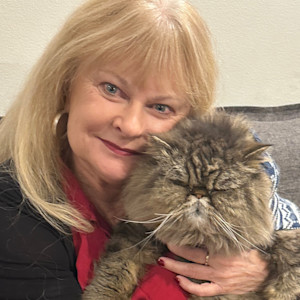
Dr. Shelby Neely, DVM
Dr. Shelby Neely is a freelance writer and veterinarian who graduated from the University of Pennsylvania School of Veterinary Medicine and has practiced veterinary medicine for 30 years, specializing in small animals. Her work has appeared in Allivet, AsktheCatDoctor, WhiskerDocs, Ask the Cat Doctor Radio, Ask the Cat Doctor TV, and numerous other websites, brochures, newsletters, newspapers, and ebooks. In her spare time, Dr. Neely likes to spend time with her three children, two grandchildren, three cats, two grand-cats, and five grand-dogs.
Related articles
![Puppy playing at home with his toy alone.]()
Tips for Leaving Your Puppy Home Alone for the First Time
![girl with blue hair starting puppy training with white dog]()
Puppy Training 101: How to Train a Puppy
You gotta start somewhere.
![a whining puppy]()
Why Is My Puppy Whining?
It’s the saddest sound in the world.
![Young woman holding her large dog in her arms outdoors.]()
What to Do When Your Dog Is Even More Anxious Than You Are
Did you get a dog for emotional support and now they are the one who needs it?
